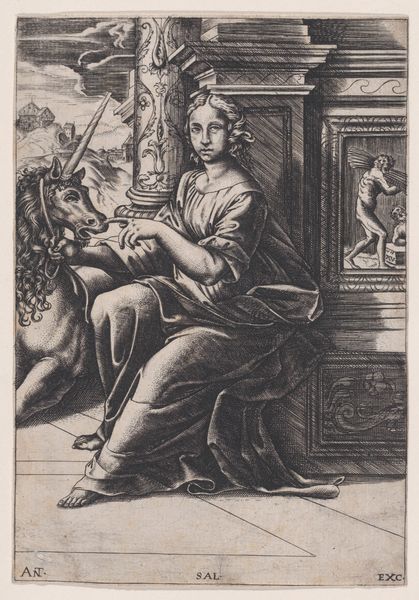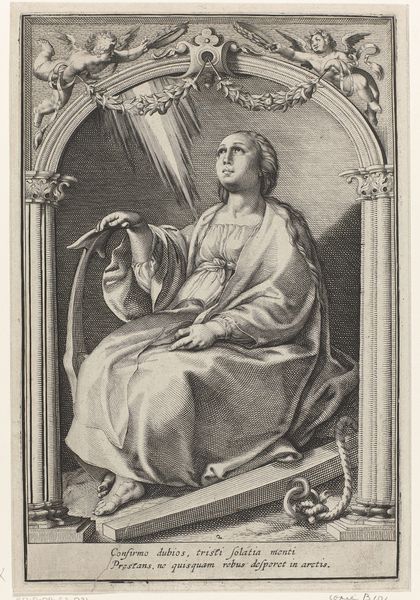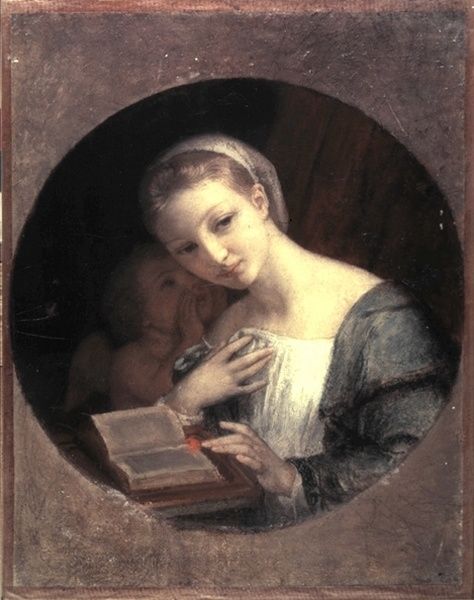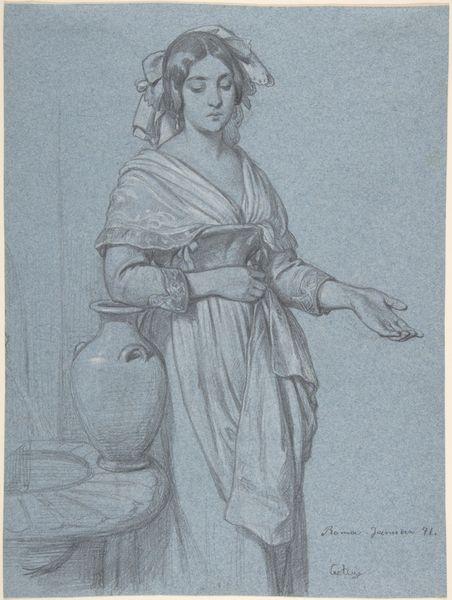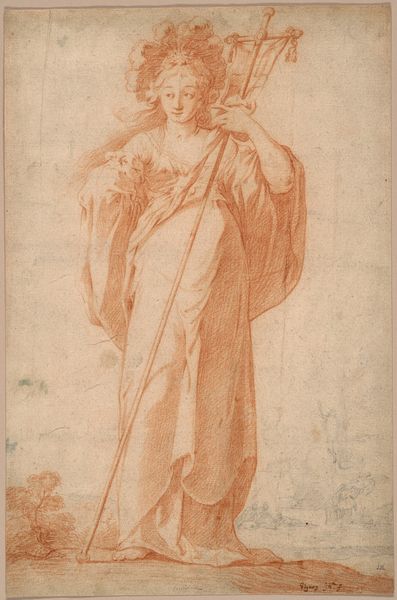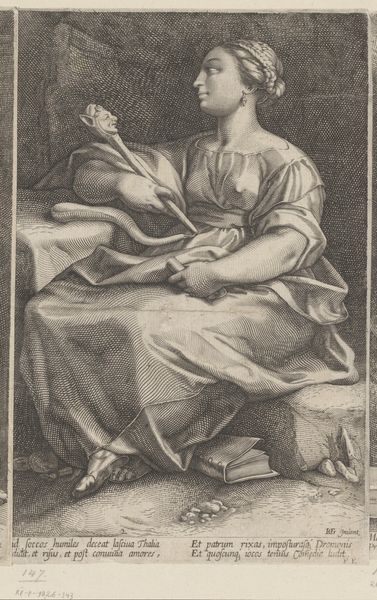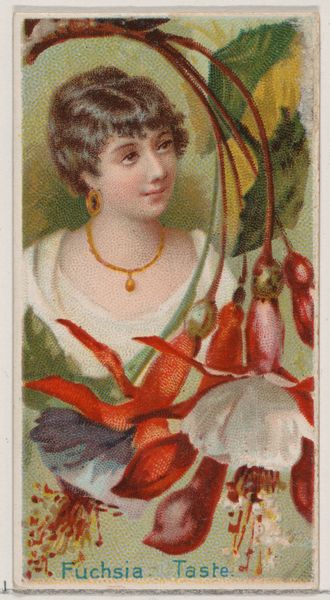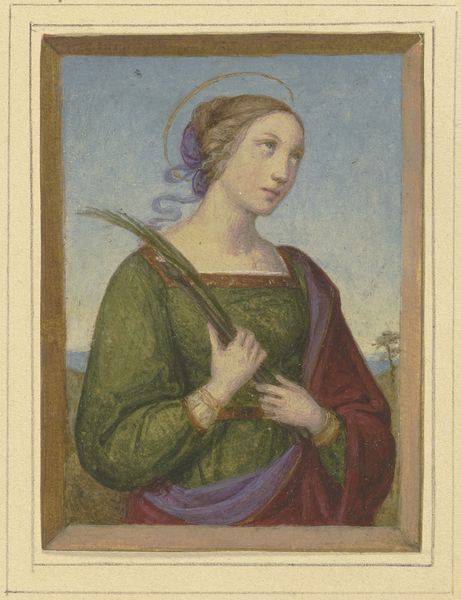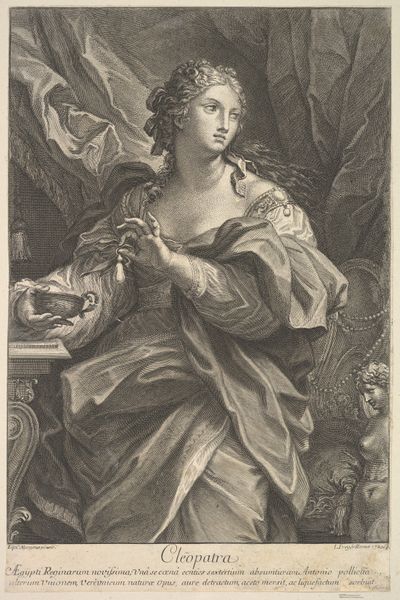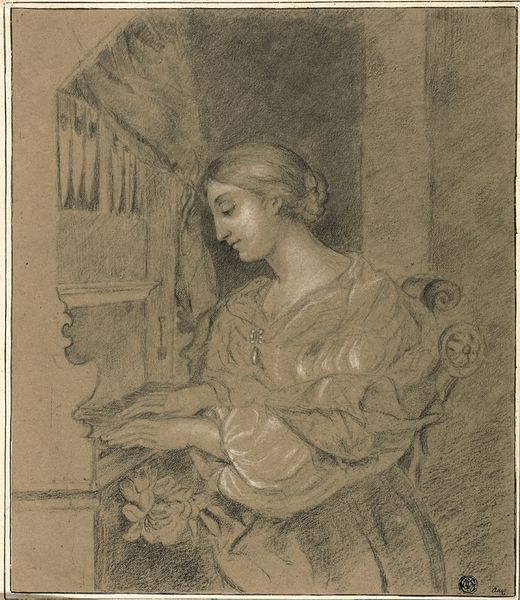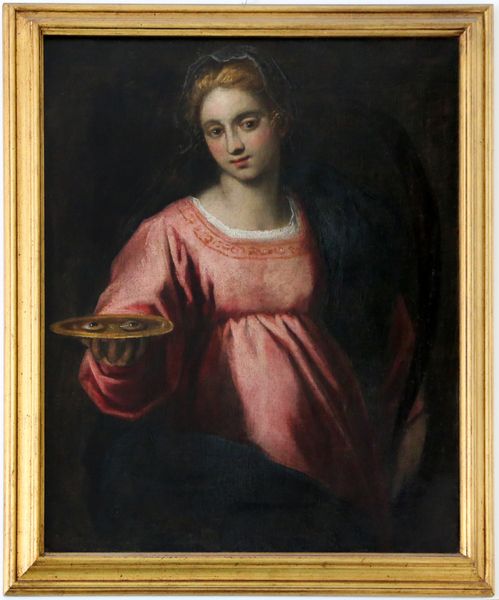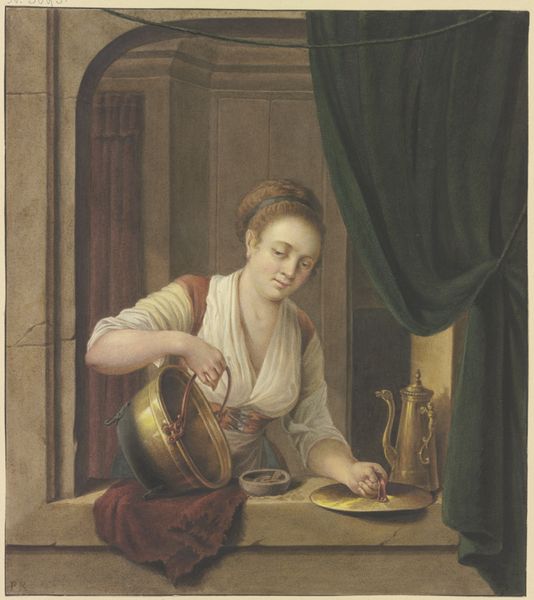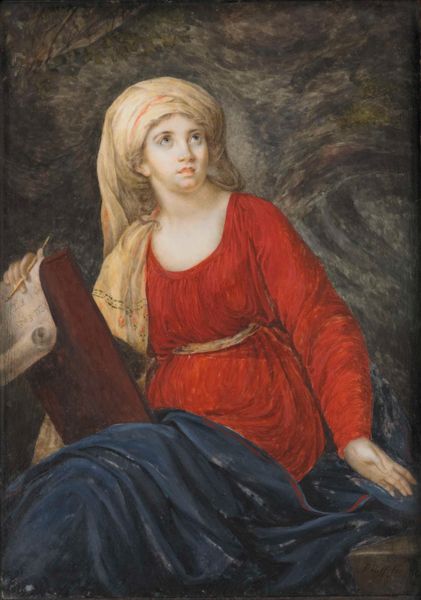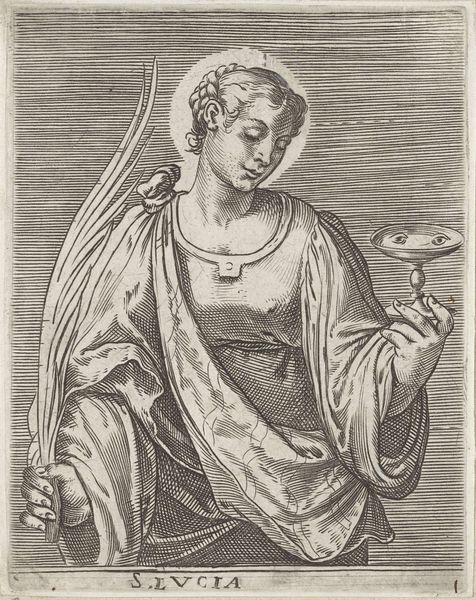
textile
#
portrait
#
textile
#
figuration
#
11_renaissance
#
oil painting
#
history-painting
#
decorative-art
#
portrait art
Dimensions: H. 17 1/2 x W. 13 inches (44.5 x 33 cm)
Copyright: Public Domain
Curator: Take a moment to observe "The Virgin Annunciate," a tapestry woven sometime between 1730 and 1765, and attributed to Pietro Ferloni. Editor: Immediately, I’m struck by the subtle interplay of blues and pinks, how they softly define the Virgin’s form and contribute to an overall atmosphere of pious serenity. Curator: Tapestries like these blurred the lines between fine art and craft, they were frequently commissioned by wealthy patrons to demonstrate social standing through refined artisanal production. Notice how textile adds a different dimension to depicting an established historical motif. Editor: Indeed, and the choice to render this scene in tapestry enriches the viewer’s understanding. It gives it texture—literally. The very material speaks to the sacred interior, providing depth to the figure’s humble piety. Curator: Think about the workshop involved in such production; the division of labor, the specialized skills required. These tapestries served as luxury items that could be transported. How might this mobility change the reception, understanding and commodification of devotional iconography at the time? Editor: That is an excellent point. Beyond this, I observe how the composition utilizes subtle guiding lines—the gaze, the book—to pull us into the scene. The Virgin is self-contained, yet invitingly vulnerable, caught in a moment of transition between ordinary life and the extraordinary calling from above. Note the Halo around her head. The color palette also adds meaning by complementing Mary's virtues through blues connoting purity and faith. Curator: And consider also that tapestries such as this one were products for consumers in various settings, each of whom was probably situated within their own social status. What does it mean to perform these figures, as people or subjects who may have experienced the original Virgin? The reception and appreciation, but also interpretation, would vary from viewer to viewer, which impacts our interpretation of the textile medium itself. Editor: I concur, reflecting upon this tapestry—its composition, materials, and subject matter—illuminates a compelling harmony between craftsmanship, faith, and form. Curator: Ultimately, viewing artwork such as this tapestry through both a formal and material lens allows a more enriching historical contextualization of not only the piece, but of devotional artwork itself.
Comments
No comments
Be the first to comment and join the conversation on the ultimate creative platform.
